If you’re considering visiting Istria, chances are you’ve heard of its heavy hitters in the main towns of Pula, Rovinj, and Motovun. But as someone who’s called Croatia home and spent weeks exploring Istria over the last decade, I’m here to guide you down the Istrian road less traveled.
In my Istria travel guide, we’ll explore my favorite part of Croatia, where crowds thin out. Still, the cultural tapestry remains vivid, woven with the rich threads of Italian and Croatian heritage.
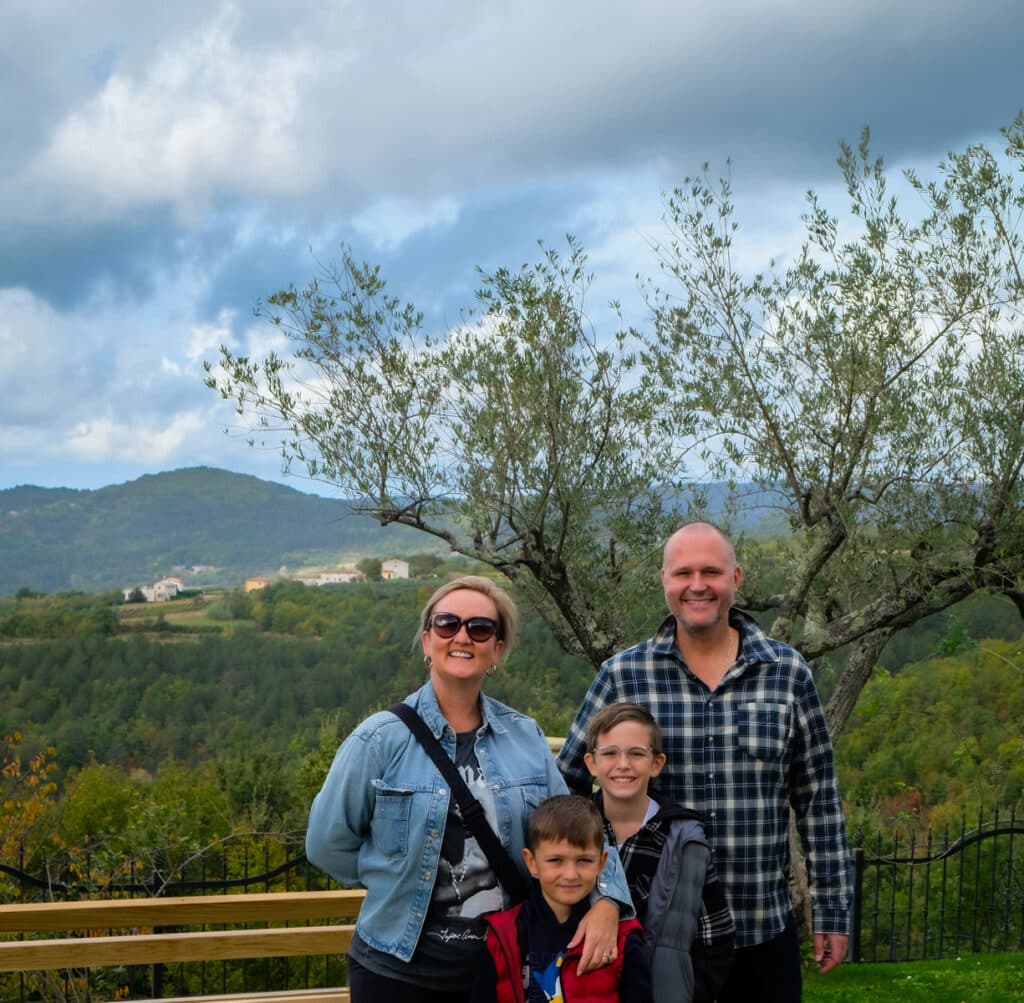
Skip Ahead To My Advice Here!
Best Things To Do In Istria
In this post, I’ll share with you Istria’s lesser-known side, the one I’ve come to cherish through years of discovery. You’ll be privy to the authentic spots that have captured my heart – beautiful places devoid of fanfare but brimming with charm.
I’ll reveal where to dig into the most robust Istrian meals and indulge in genuine truffle experiences that I’ve come to anticipate each year. Plus, we’ll visit local haunts where tradition isn’t just preserved; it’s a way of life.
Istria’s landscapes, a stunning canvas of rolling hills and sparkling seas, have been the backdrop to my wanderings. They’re waiting to color your experiences, too, from the vineyards that stretch like green seas to the towns where every stone tells a story.
The best part? If you’re coming from Zagreb, the journey to Istria is an easy transition from urban rush to pastoral calm. You’re never far from the tranquility of Istria’s hills and the warmth of its people.
Let’s step off the beaten path and into the heart of Istria – the places that don’t always make the postcards but are always highlighted in my every return.
Best Places To Visit In Istria Croatia
1. Brijuni Islands
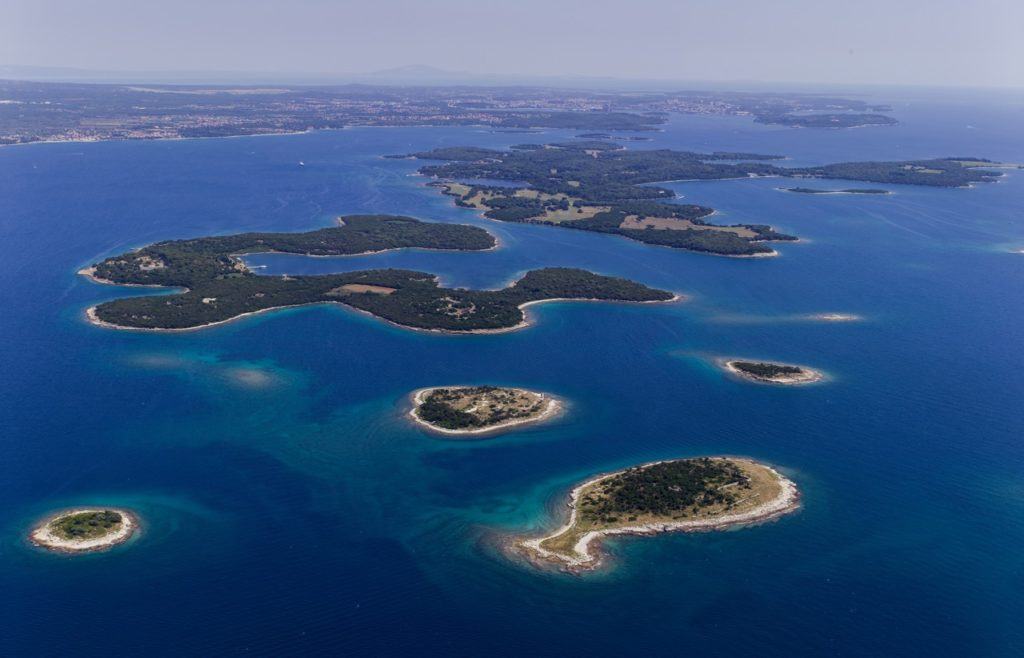
Just a short boat ride from Fažana, the Brijuni Islands await a tranquil retreat. Once the summer residence of President Tito, this cluster of 14 islands is now a National Park celebrated for its unspoiled nature and historical sites.
Here, you can hop on a tour to explore ancient Roman villas and a safari park with exotic animals. The main island, Veli Brijun, is the most accessible and offers a little bit of everything, from historical tours to simply basking in the serene beauty of untouched Mediterranean landscapes.
For the kids, look out for the dinosaur footprints!
2. Lim Fjord
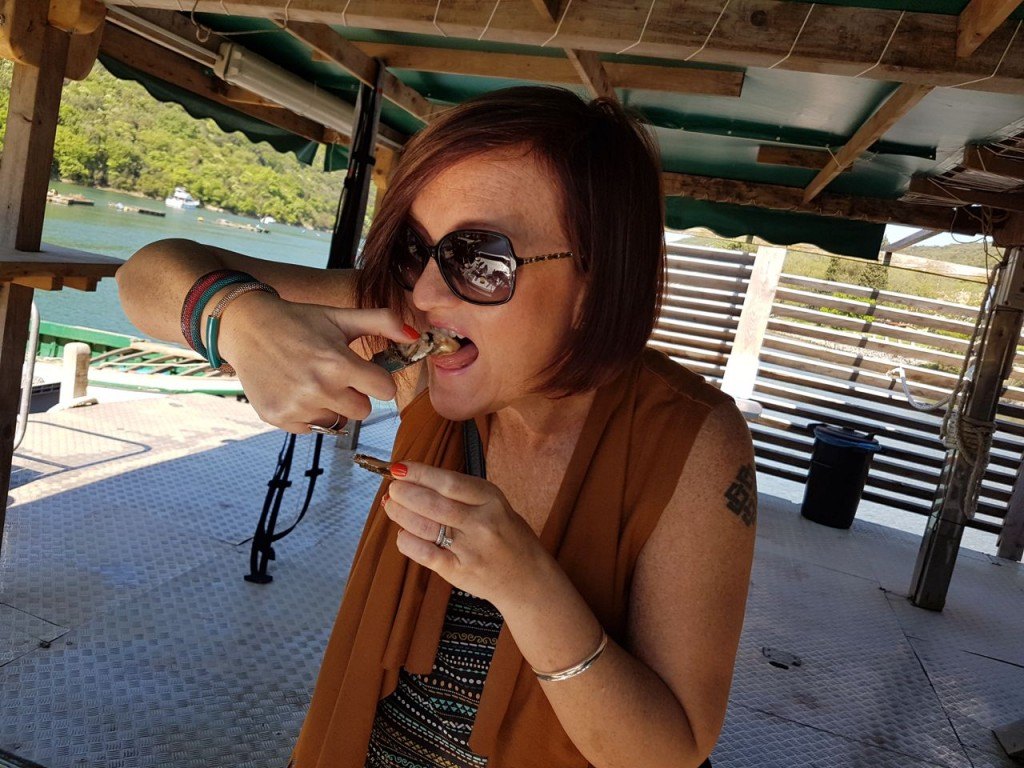
If you find yourself in Istria and have a hankering for some of the freshest oysters you’ll ever taste, Lim Fjord is your go-to spot.
Officially known as Lim Bay or Lim Channel, this stretch of the Adriatic Sea cuts into the Istrian coast like a Norse fjord, offering a briny bounty that’s as delicious as it is renowned.
The fjord’s unique mixture of fresh and saltwater creates an ideal environment for shellfish — and the oysters here? They’re a local favorite for a reason. Pull up a chair at one of the fjord’s waterside eateries, and you’ll be served oysters that were likely plucked from the sea that very day.
Paired with a crisp glass of Malvasia, a local white wine, you’ll quickly understand why this is more than a meal; it’s an experience. Beyond the shellfish, the fjord itself is a sight to behold, with steep, green-lined cliffs that provide a dramatic backdrop to your culinary adventure.
Unique Things To See Along The Istrian Coast
3. Novigrad – Between Umag & Poreč.
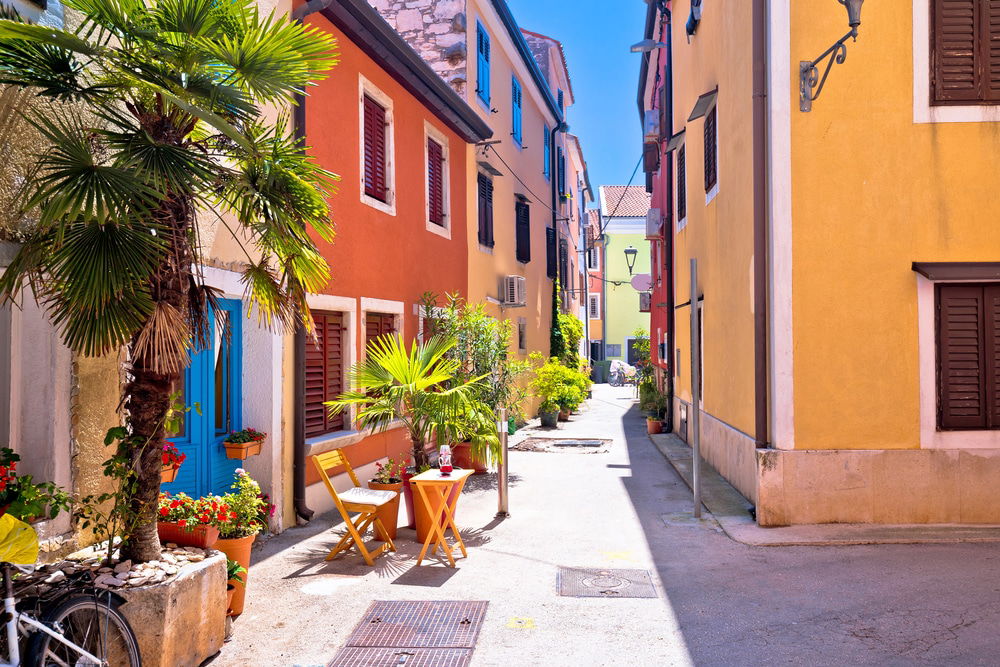
One of three towns in Croatia with the same name, Istria’s Novigrad, is sometimes called Novigrad Istarski to avoid confusion. This beautiful town lies on a small peninsula on the northern coast of Istria, roughly in the middle between Umag and Poreč.
Its origins go back to the 5th and 6th centuries, and during the Middle Ages, it was the seat of the Diocese of Novigrad. The town’s layout and general structure have retained much of that medieval history. There are still numerous narrow, winding streets in its old town center. Lots of small atmospheric shops still occupy the old buildings.
4. Umag

Dive into the charm of Umag, a quaint coastal town in Istria that offers more than just stunning beaches and clear blue waters. Renowned for its thriving nightlife and top-notch tennis facilities – having played host to the ATP Croatia Open for many years – Umag simultaneously provides a peaceful escape and active vacation.
While exploring the old town, you’ll be greeted by ancient walls and stunning architecture, providing the kind of beauty that calls for leisurely strolls and al fresco dining. Getting to Umag is a breeze, with its proximity to Italy and Slovenia making it accessible by car. At the same time, Pula Airport, approximately 83 km away, is the nearest airport for those arriving by plane.
5. Vrsar

Another great small town in Istria is Vrsar. This small fishing town lies about 10 kilometers south of Poreč, about halfway down the west coast of Istria.
It occupies a small coastal hill, while several small islets lie just off its scenic waterfront. Like many other seaside towns in Istria, Vrsar also has a lovely marina and a vibrant old town.
Its old town consists of winding streets, alleys, and charming stone buildings. There’s a beautiful waterfront promenade, too, while various viewpoints offer fine views of the surrounding landscape and are excellent sunset-viewing locations. It is a fun destination to stretch your legs for an hour or two while road-tripping around Istria.
6. Fažana

Fažana is a charming little coastal town in Istria, often seen as the gateway to the enchanting Brijuni Islands. It’s a lovely place where the local fishing trade still bustles, giving visitors a taste of authentic coastal life. The town’s waterfront is lined with colorful buildings and has a promenade ideal for leisurely walks, with views stretching out to the northern Adriatic Sea and the archipelago beyond.
You can spend your time here exploring the local markets, where fresh catch and regional olive oil tastings are up for grabs, or perhaps eat your way through the fish restaurants.
Fazana isn’t just a feast for the palate; its beaches are a treat for the senses, too. Wandering through the main town, you’ll find a charming blend of old-world allure and vibrant life. It’s the kind of place that’s tranquil enough to unwind yet lively enough to keep the holiday spirits high.
Pastel-hued buildings and soaring church spires sketch a postcard-perfect skyline, while a diverse array of accommodations ensures there’s a cozy spot for every traveler and every budget. Whether you’re here for a weekend or a week, Fazana’s charm is sure to make a lasting impression.
7. Premantura
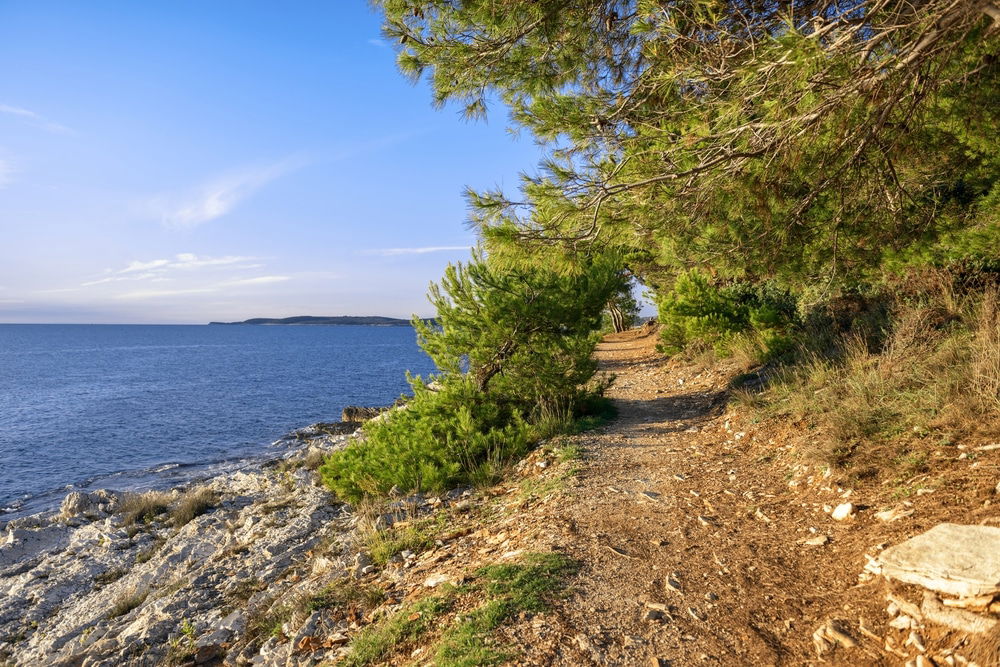
Premantura is your laid-back escape from the everyday rush. Just a quick jaunt from the energetic pulse of Pula, this small town is your launchpad to the wild beauty of Cape Kamenjak, where rugged landscapes meet tranquil seas.
In Premantura, life slows down to a comfortable, easy-going rhythm. Here, you’re not just another face in the crowd but part of a community where local cafes, quaint accommodations, and neighborhood shops make you feel right at home.
Outdoor enthusiasts, get ready. Premantura is all about embracing the call of the wild. Hit the trails on a bike or on foot to snag some Instagram-worthy clifftop views, or chill out in hidden coves with water so clear you’d think it’s glass. And if you’re into windsurfing or kayaking, the breezes here are as inviting as the myriad of islets just a paddle away. As evening falls, kick back and watch the sunset perform its daily spectacle, turning the sky into a live canvas.
Whether you’re rolling solo, bringing the family for some quality beach time, or looking for a low-key romantic getaway, Premantura is about as authentic as it gets.
Brands We Use And Trust
Charming Towns In Istria For Your Itinerary
8. Završje, Close To Motovun

Završje lies in northwestern Istria, not too far from Motovun. Also perched scenically atop a hill, this is a real architectural gem. Built with wood and stone, Završje is one of the most off-the-beaten-path places in Istria. Few tourists ever go there—those who do love the experience.
This is not a big town by any means. If anything, it’s a village. Built atop a prehistoric fort and strategically important to the Romans, its roots go back thousands of years. Medieval and Venetian noblemen later recognized the town’s beauty and significance, adding more fortifications.
Therefore, even though it’s less visited, Završje has lots to check out. From its palace and castle to the Church of St. Mary and the Church of St. Rocco, there are plenty of architectural highlights, especially considering its size. Another notable feature is the Three Istrian Musketeers cycling route.
9. Oprtalj

In the same area as Završje, also near Motovun, Oprtalj is another of the Istrian hilltop towns worth visiting. This small town also features fortified town walls, a bell tower, and winding alleyways. It’s a fantastic place to immerse yourself in Istria’s rich history and fascinating folklore.
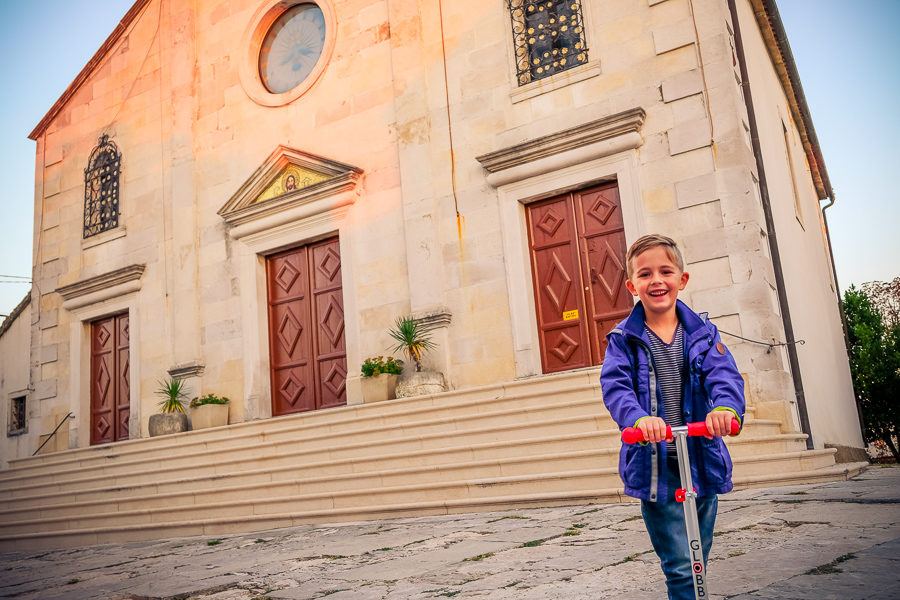
Oprtalj’s churches are adorned with works of art. Simultaneously, the restaurant that overlooks the valley below serves traditional dishes—don’t forget to try the local white and black truffles if you have not already!
Gastronomy plays a significant role in the story of tourism in Oprtalj. It has many farms, and agricultural taverns are places you should check out when visiting Istria.
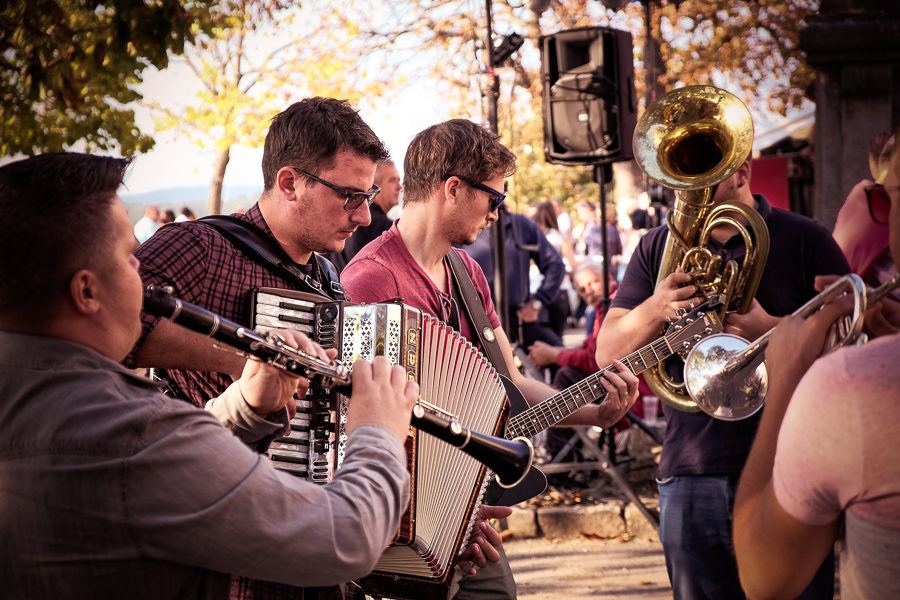
Try to plan your visit to Oprtalj around the town’s famous chestnut fair – known as a kestenijada! We spent a glorious day at the fair with the two kids. It is even the place where my youngest learned to walk and took his first jittery steps.
Between the huge kid’s park, music, beer, wine, food, and chestnuts, there is plenty to keep you (and the kids) happy for many hours. The entrance is free, and the prices of food and drinks are very reasonable.
10. Vodnjan
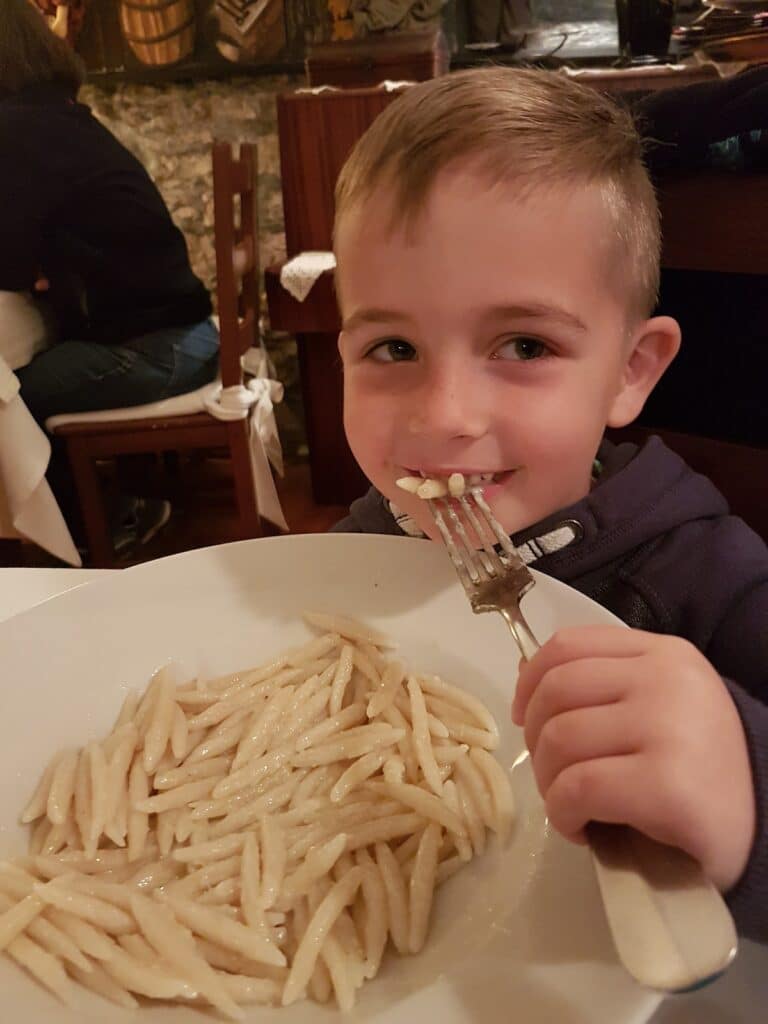
Located about 10 kilometers north of Pula, Vodnjan is another often-overlooked town in Istria that is well worth visiting. It’s a typical Istrian town packed with olive groves. Its historical town center is filled with beautiful old buildings, numerous churches, cobbled streets, and authentic shops.
In terms of tourist attractions, Vodnjan has a lot going for it, including some possible surprises. This historic city dates back over half a millennium and was the first of all Istria towns to get electric city lighting. You can still see that very first electric lamp in town!
Additionally, Vodnjan also has its own collection of mummies. You didn’t see that coming, right?! You can see Vodnjan’s mummies, which are the preserved bodies of saints, in glass cases at the Church of Saint Blaise. That church, by the way, is also the largest in Istria, housing hundreds of religious relics, including, supposedly, one of the thorns of Jesus’ crown, a piece of Jesus’ cross, and a fragment of the veil of the Holy Virgin. This makes this stunning church a popular pilgrimage destination in Istria.
Another central claim to fame of this beautiful town is that it has the longest street in all of Istria. There’s plenty to see and do here for a few hours, in other words!
Another family first happened here – my eldest son ate his very first plate of the magical Istrian pljukanci pasta. Albeit with butter and not the Boskarin saice, we did.
11. Hum
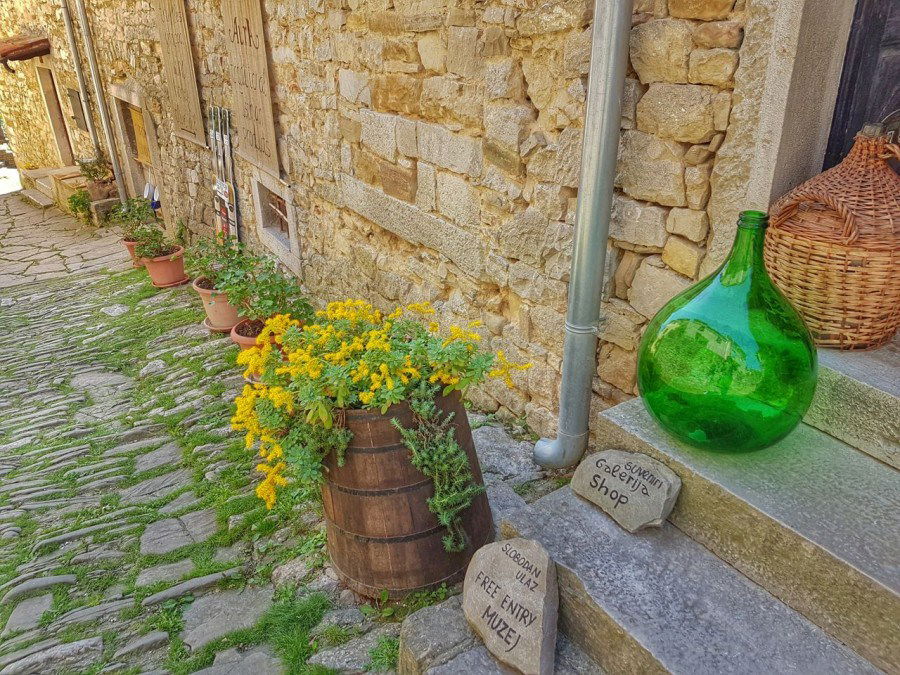
Situated deep in the center of Istria, far away from the crowds along the coastal towns, Hum is self-proclaimed as the smallest town in the world—but not officially, as in the Guinness Book of World Records that we can see.
Although its population fluctuates between twenty to thirty, it is an official town – with a mayor and all.
Just this fact alone would make it an interesting place to visit, but there’s more to it than that. This tiny village consists of no more than about a dozen stone houses and is entirely encircled by a stone wall.
Surprisingly, such a small place needed to be fortified at a particular point in its history, a testimony to the fact that this region was once much contested, a fertile landscape valuable to several foreign powers.
Attractions in and around Hum include the Glagolitic Alley, a three-kilometer-long walkway lined with massive stone monuments, the Romanic Chapel of St. Jerolim, and the stone streets, buildings, and walls. You may also want to explore the lush landscapes in the area, home to truffle forests, meadows, and hills.
12. Bale
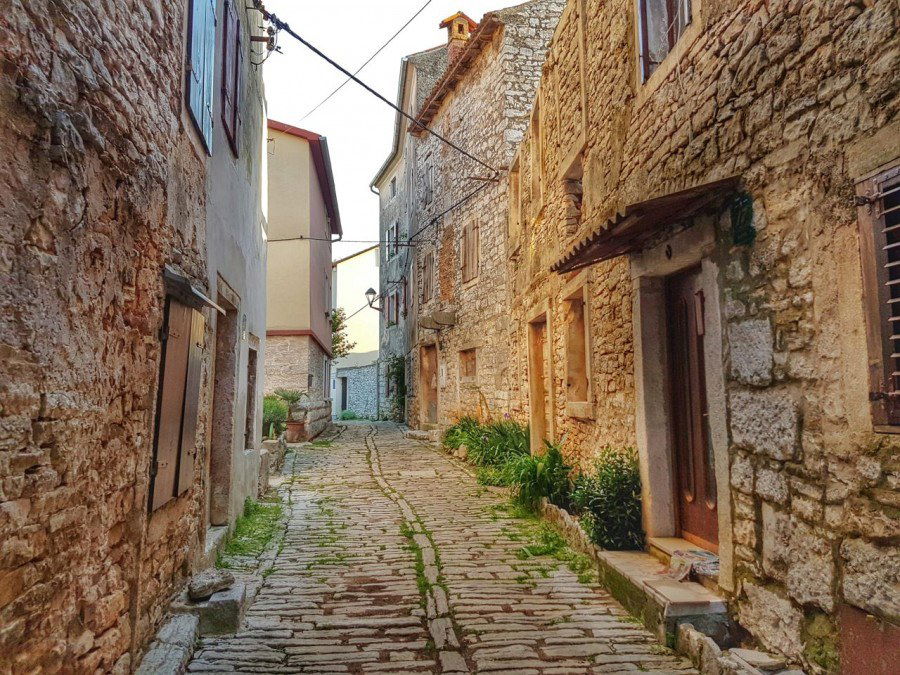
Istria has many other charming towns beyond Rovinj, Motovun, and even Porec and Pula. One of the top Istrian places I suggest you visit is Bale.
It is situated in the southwestern corner of the Istrian peninsula, about twenty kilometers from Pula. This medieval town, its origins in the Roman stronghold known as Castrum Vallis, is sometimes regarded as the best-kept secret in Istria.
Constructed entirely from stone, it features a labyrinth of cobbled streets lined with old stone townhouses, a Gothic-Renaissance castle, and the 36-meter-high bell tower of the St. Julian Church.
A laid-back and welcoming atmosphere awaits you in this friendly town, while nearby rocky beaches and the camping area are among the most pristine on the triangular peninsula.
13. Labin – A Rovinj & Motovun Mix
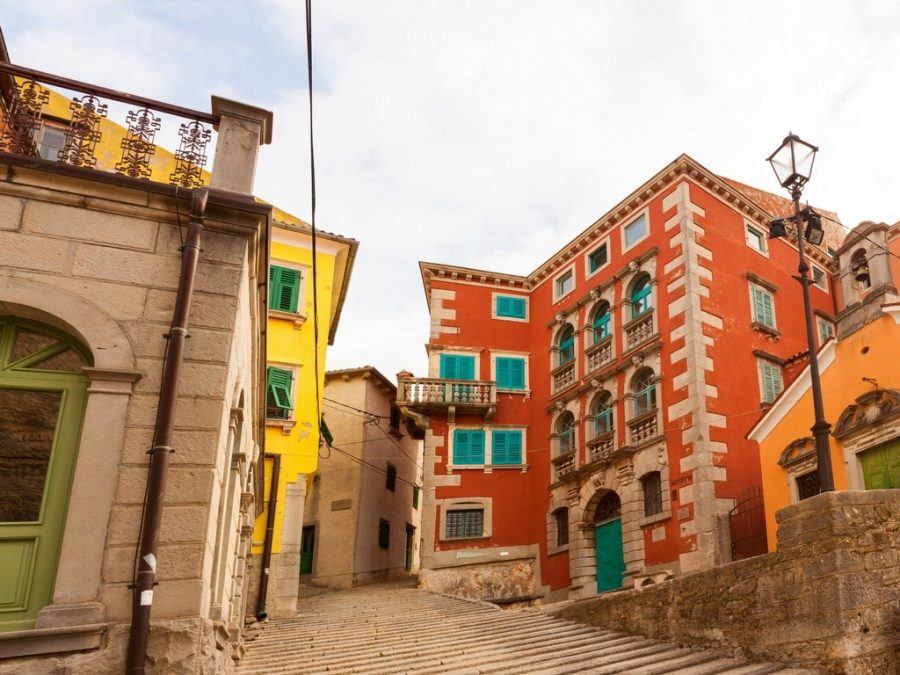
Perhaps the best possible mix of Rovinj and Motovun, two of the most popular tourist destinations in Istria, Labin lies about three kilometers from the Adriatic Sea. Set 325 meters high on a hill, it offers gorgeous views of the Kvarner Gulf, including the coastal resort of Rabac.
Labin is a quintessential picturesque hilltop town featuring the colorful architecture that’s found most notably in Rovinj. Its steep and narrow, sometimes cobbled streets take you on a fun urban adventure, while countless pastel-colored buildings contribute to the undeniable charm of this less-visited Istrian town.
For such a small town, it packs a large number of attractions. These include the Fortica Fortress, the Mining Museum, and numerous art galleries and museums. Of course, it wouldn’t be a town in Istria, a food-focused region, if there weren’t several excellent restaurants as well.
14. Grožnjan
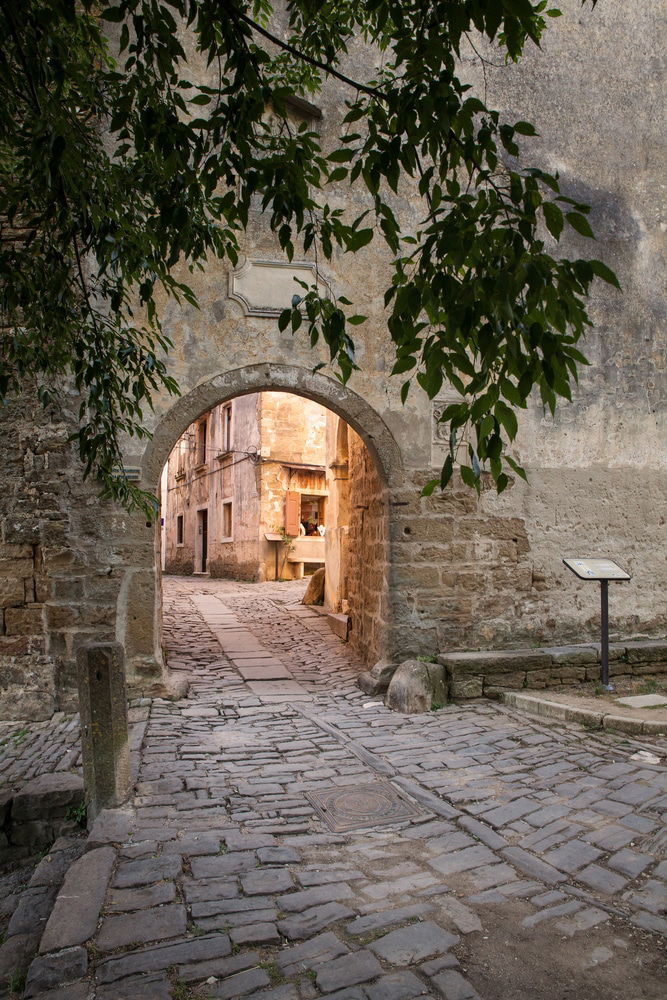
Known as the “Town of Artists,” Grožnjan is a pretty hilltop town typical of Istria filled with studios and art galleries. It’s the setting of summer film schools, art, and music workshops.
It hosts an annual jazz festival, recently getting well-deserved international recognition as one of Europe’s best small jazz festivals. Additionally, it would do its nickname of artist’s town injustice if there wasn’t an annual painting festival, too!
This charming town boasts some beautiful medieval architecture in its historic center, fun cobbled streets, and amazing views of the surrounding Istrian countryside.
15. Buje
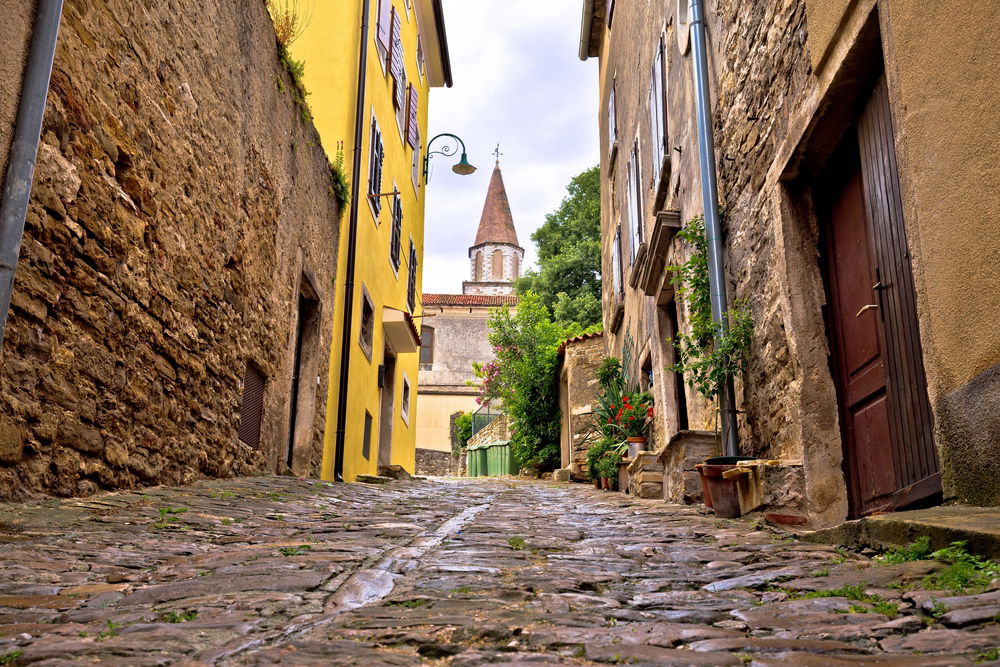
Engage with the rustic charm and gastronomic wonders of Buje, known particularly for unearthing the largest white truffle, propelling it to fame amongst culinary enthusiasts. This Istrian town, located near the Slovenian border, is a beacon for those exploring the best places to visit in Istria, particularly for wine and truffle aficionados.
Wandering through its old cobblestone streets, you’ll discover historical elements interspersed with vibrant eateries and bars. Buje is easily accessible by road from various points in Istria, and with the nearest airports being Trieste (Italy) and Pula, it’s possible to combine your visit with other European destinations.
16. Svetvinčenat
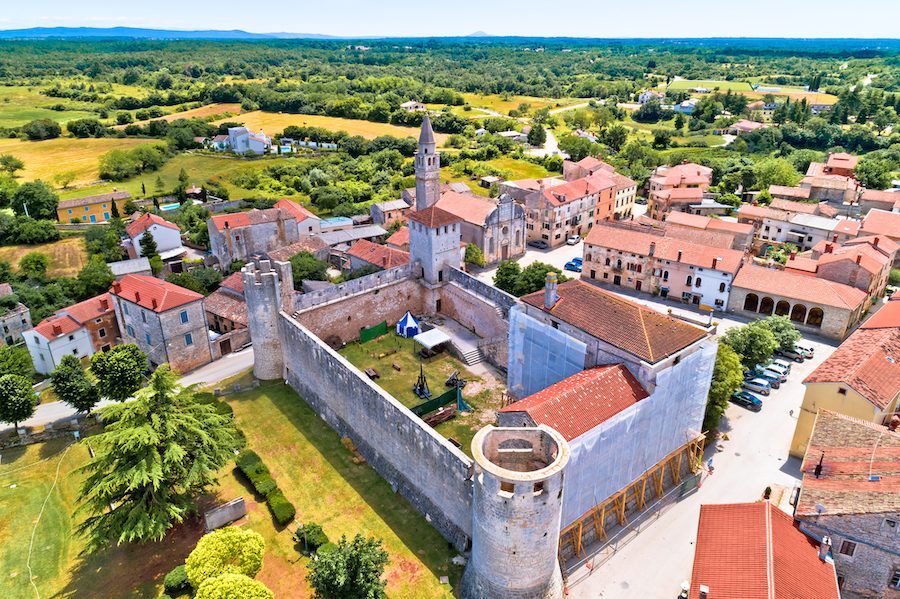
Calling Svetvinčenat a town might be somewhat of an overstatement. Home to just over 2,000 people, this is more like a village than an actual town.
Nonetheless, it boasts a centuries-long history and is home to a few fascinating historic attractions, making it a worthy stop on any Istria road trip itinerary.
The village grew around a Benedictine abbey, first mentioned in historical documents dating from the 10th century. Its premier tourist attraction nowadays is the striking Morosini-Grimani Castle, one of the best-preserved Venetian buildings in Istria. The Renaissance square, known as “Placa,” is a fun place to wander across, too, while the Church of Saint Vincent has remains of beautiful frescoes.
17. Žminj
Nestled in the heart of Istria, Žminj exudes an authenticity that captivates those seeking to explore the best of Istria away from the bustling tourist hotspots. With its picturesque stone houses and narrow winding streets, Žminj offers a step back in time while simultaneously providing a vibrant cultural scene through its various festivals and events, showcasing traditional Istrian music, dance, and cuisine.
The centrally located town serves as an excellent starting point for exploring Istria by car, allowing you to embark on a delightful Istria trip, discovering charming villages and stunning landscapes that dot the region.
Each August, the town hosts the Bartulja festival, a celebration of its patron saint that transforms the quiet streets into a showcase of folklore and tradition. If you’re looking to explore Istria beyond its glossy veneer, a day in Žminj, with its welcoming residents and enduring customs, is a must.
18. Pićan
A rather unassuming small town in Istria at first, Pićan has a cultural heritage so rich it would make other similarly sized towns across Europe super-jealous. Its history goes back to Roman times when this was the site of a military stronghold called Petina. Incidentally, the Pićan area’s wine was so good it was renowned even in the highest social classes in Rome. Nowadays, you can still sample world-class wine here!
Later on, Pićan was the seat of the Diocese of Pićan, one of the oldest and smallest dioceses in the Christian world, from the 5th to the 18th century. It became a thriving medieval community complete with governors, officers, and various artisans during this period. The 14th-century Town Gate is still the prominent landmark in town.
Other top attractions in Pićan are the Parish Church of the Announcement with its striking Bell Tower, the Church of Saint Michael, and the Saint Helen Viewpoint.
Historic Gems Around The Istrian Peninsula
19. Glagolitic Alley
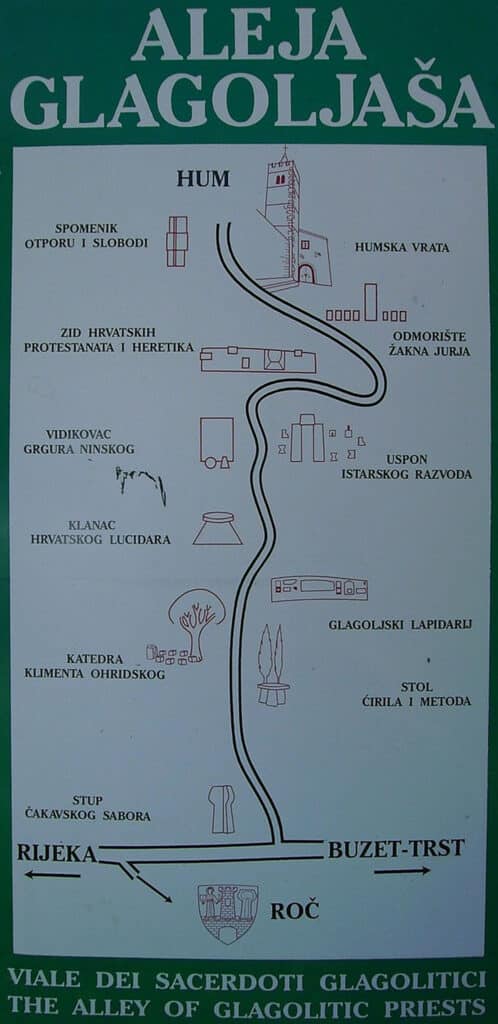
On my travels through Istria, I encountered the Glagolitic Alley—a notable 7km stretch from Roč to Hum, lined with 11 monuments that narrate the tale of the Glagolitic Script, right up to the imposing town gates of Hum.
Let’s delve into the Glagolitic Script. It’s the oldest Slavic alphabet, emerging in the 9th century. Think of it as a fusion of Greek and Latin scripts conceived by the scholarly St Cyril. This Byzantine monk from Thessaloniki, along with his brother St Methodius, was tasked by Emperor Michael III in 863 to spread Christianity in Great Moravia.
During their mission, they sought to democratize the Christian texts. The result was the Glagolitic Script, but it wasn’t straightforward. Direct translations from Latin or Greek were impractical, leading to the invention of a new language, drawing from the Macedonian Slavic dialect of Thessaloniki.
The script gradually became integral to the region, surviving well beyond its creators’ lifetimes and leaving its imprint across Croatia. Despite Latin’s eventual dominance, Glagolitic’s heritage is immortalized on Glagolitic Avenue.
The script’s name originates from the Slavic word for ‘speaking.’ It’s even found its way into modern culture, appearing in video games like The Witcher and TV shows such as Log Horizon. It also diversified into styles like Angular and Round Glagolitic. Although it’s not used in daily communication today, its significance to Croatian culture is undeniable.
It’s a unique opportunity to connect with a vital piece of Croatia’s cultural heritage.
20. Dvigrad Ruins

Its name meaning “Two Towns,” Dvigrad initially consists of two separate communities, Castel Parentino and Moncastello. Only the ruins of Moncastello remain today. This abandoned medieval town is one of Istria’s most fascinating attractions, having been inhabited from Illyrian times through the 18th century.
You can visit the ruins of Dvigrad today and wander through the remains of this medieval town castle. Surviving buildings and structures, although severely ruined, include two rings of town walls, defensive towers, the imposing Church of Saint Sophia, the main town square, and the palace.
Peaceful Retreats In Green Istria
21. Livade
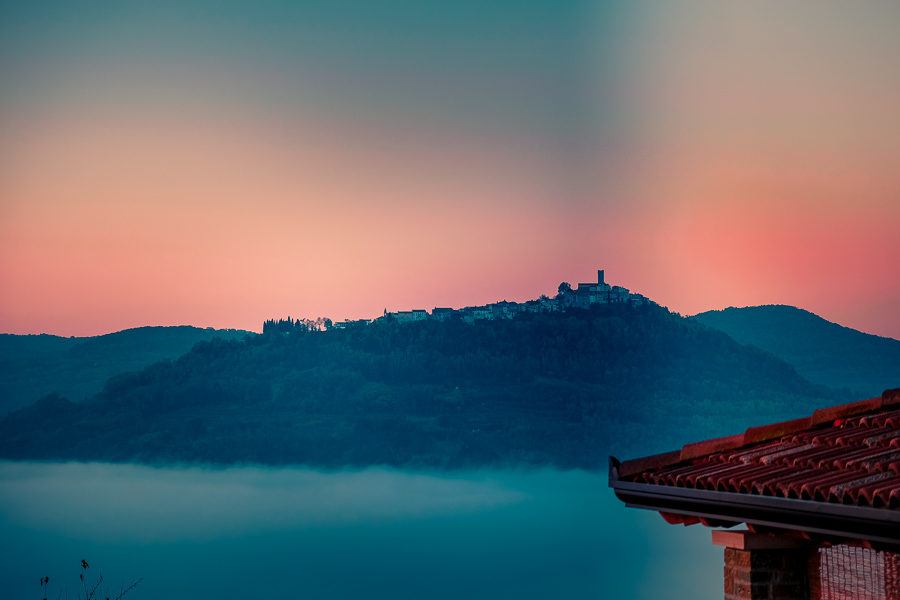
We used Livade as our base for exploring a section of Istria on more than one occasion. We did so for several reasons:
- For its proximity to Motovun and the surrounding villages we planned to explore in Istria
- We found a great place that has views across to Motovun, and that had a heated swimming pool
- The Zigante Truffle festival takes residence here for ten weekends over September, October, and November – and we wanted to spend time eating and drinking our way around the festival.
Livade is small, but it is an excellent base for central Istria. There is a market, several coffee spots, and several excellent restaurants. I totally recommend Konoba Dorjana. A blog reader suggested it to me, and my host also gave it the local thumbs up – we ate two of our best meals there! Try the game goulash as well as the homemade fuži with truffles.
The Zigante Truffle Festival is definitely worth a few hours. There are many exhibits with free samples to try before buying. There is also a spacious eating area inside and outside for you to enjoy the dishes.
We loved the truffle eggs, burger, and chips with a truffle mayonnaise! But there was also truffle pasta and truffle tiramisu – if you can believe that!
Speaking of Zigante, Livade is also home to the famous Zigante Restaurant. It’s not cheap, but the food is something out of this world, and the experience is worth the extra euro. And trust me, if you like fine dining and truffles, you want to save your holiday pennies and eat here.
22. Pazin
Pazin, often hailed as the “heart of Istria,” invites travelers to explore its rich history, palpable through its robust medieval castle that dominates the town’s skyline.
Pazin, the administrative heart of Istria, may be small, but it punches above its weight in historical allure and adventure. The town’s star attraction is the medieval Pazin Castle, which towers over a stunning abyss that has become a playground for thrill-seekers with its exhilarating zip line.
After you’ve gotten your adrenaline fix, take a moment to explore the castle’s museum to dip into the local history. Wander the town’s streets, and you’ll be rewarded with quaint eateries where Istrian specialties like fuži pasta offer a taste of the region’s culinary heritage.
Wrap up your visit with a leisurely hike along the trails encircling the town, offering both a glimpse of the serene Istrian landscape and a chance to work off that hearty meal.
Move This Adventure To Your Inbox & Get An Instant Freebie

No spam. Unsubscribe at any time.
Serene Beaches And Natural Wonders In Istria Croatia
23. Duga Uvala, Close To Pula
Explore the serene ambiance of Duga Uvala, a concealed gem nestled along the eastern coast of Istria that promises a tranquil retreat away from the typical tourist trails. Distinguished by its secluded bays, clear crystal-clear waters, and pebble beaches, this quiet area offers a respite for travelers looking to immerse themselves in a peaceful coastal escape.
Duga Uvala, while renowned for its natural beauty, also caters to those seeking a leisurely holiday with its wellness center, offering a range of rejuvenating treatments and activities. Easily reachable by car, it’s between Pula and Labin, making it a convenient destination to include in your Istrian itinerary, especially for those exploring the peninsula’s exquisite beaches and tranquil bays.
As you can see, Istrian towns have a Mediterranean climate but are unlike the rest of Croatia. We hope that you enjoy our highlights of Istria.
Places In Istria FAQs
What are the must-visit attractions in Istria?
Istria offers a wealth of attractions, including ancient Roman ruins such as the amphitheater in Pula, the picturesque town of Rovinj, the Brijuni Islands National Park, and the beautiful beaches along the coast.
When is the best time to visit Istria?
The best time to visit Istria is during the spring and early autumn when the weather is pleasant, and there are fewer tourists compared to the peak summer season.
What are some traditional Istrian dishes to try?
Istria is known for its delicious cuisine. Some traditional dishes to try include “istrska supa” (fish soup), “fuži” (pasta with truffles), and “maneštra” (a hearty vegetable stew).
Is it necessary to rent a car to explore Istria?
While renting a car provides flexibility, exploring Istria is unnecessary. Public transport options exist, and many towns and attractions are accessible on foot.
Are there any music festivals in Istria during the summer?
Yes, Istria hosts several music festivals during the summer months, including the Outlook Festival in Pula and the Dimensions Festival in Štinjan.
Can you visit Istria on a day trip from Zagreb?
While Istria can be visited on a day trip from Zagreb, spending at least a few days to fully experience the region’s attractions and culture is recommended.
What are some outdoor activities to do in Istria?
Istria offers various outdoor activities, such as hiking in the Učka Nature Park, cycling along the Parenzana trail, and water sports on the Adriatic coast.
What distinguishes Blue Istria from Green Istria?
Blue Istria is recognized for its bustling fishing villages, scenic islands, and beautiful beaches along the coast. In contrast, Green Istria is renowned for its medieval towns, extensive wineries, and forests rich with truffles, presenting a more serene and verdant experience.
Can you name the key places highlighted in Blue and Green Istria?
In Blue Istria, some of the must-visit places include Rovinj, Pula, Poreč, Lim Fjord, and Duga Uvala. On the other hand, Green Istria, Motovun, Oprtalj, and Grožnjan are highlighted as remarkable destinations worth exploring.
What types of experiences does Istria offer to travelers?
Istria welcomes travelers with diverse experiences such as meandering through charismatic Old Towns, admiring the blend of Roman and Venetian architecture, participating in boating adventures, enjoying beach activities, exploring cobbled pathways, engaging in truffle hunting, and indulging in local wine-tasting sessions.
What are some of the best towns to visit in Istria?
Rovinj, Pula, Motovun, Oprtalj, and Grožnjan are popular town choices in Istria.
Which towns in Istria are known for their historic centers?
Rovinj, Motovun, Oprtalj, and Grožnjan have picturesque historical centers with charming architecture and winding alleys.
What are some quick visit options in Istria?
If you have limited time, consider visiting Rovinj, Pula, and Grožnjan. These towns offer a taste of Istria’s beauty and cultural heritage.
What does Lonely Planet recommend for Istria?
Lonely Planet suggests exploring the towns of Motovun, Rovinj, and Grožnjan and enjoying the local cuisine and Istrian wine.
What is the central part of Istria called?
The central part of Istria is known as Green Istria, characterized by its rolling hills, vineyards, and picturesque hill towns.
Which is the largest city in Istria?
The largest city in Istria is Pula, known for its ancient Roman architecture and the impressive Pula Amphitheatre.
Is there an Italian influence in Istria?
Yes, Istria has historical ties to Italy, and you can still see the Italian influence in its architecture, cuisine, and culture.
Are there sandy beaches in Istria?
Yes, Istria has several sandy beaches, such as Bijeca Beach in Medulin and Laguna Beach in Poreč.
Which town in Istria is famous for its wine?
Istria is known for its Istrian wine, and Motovun is a popular town for wine enthusiasts, offering opportunities for wine tasting in its vineyards.
What are some of the coastal areas to visit in Istria?
Rovinj, Pula, and Medulin are coastal towns that provide beautiful vistas, marinas, and access to the Adriatic Sea.
Is there an Istrian hill town that is a UNESCO World Heritage Site?
No, there is no Istrian hill town that is a UNESCO World Heritage Site. However, the Euphrasian Basilica in Poreč is a UNESCO-listed ancient monument.
What part of Istria used to be part of Italy?
Istria was part of Italy in the past, particularly during the period between World War II and the breakup of Yugoslavia.
What is a good day trip option from the Dalmatian Coast to Istria?
Pula, the largest city in Istria, is easily accessible from the Dalmatian Coast and makes for a great day trip option.
Now, tell me, do you feel ready to visit Istria?


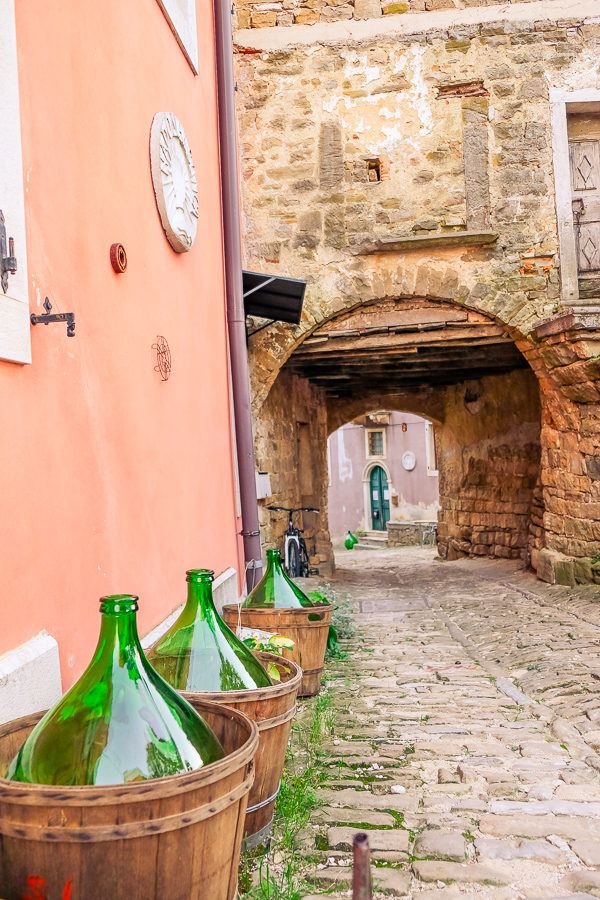
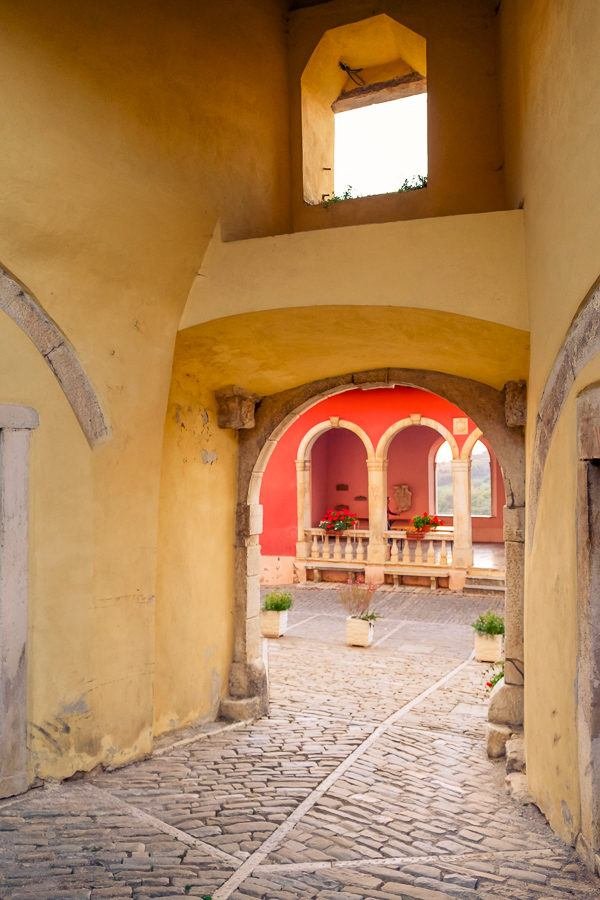
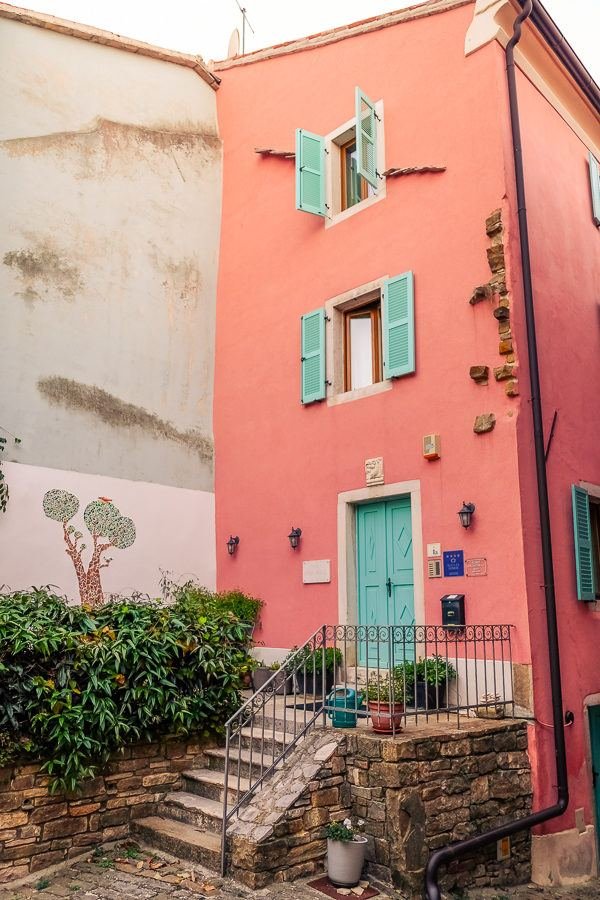
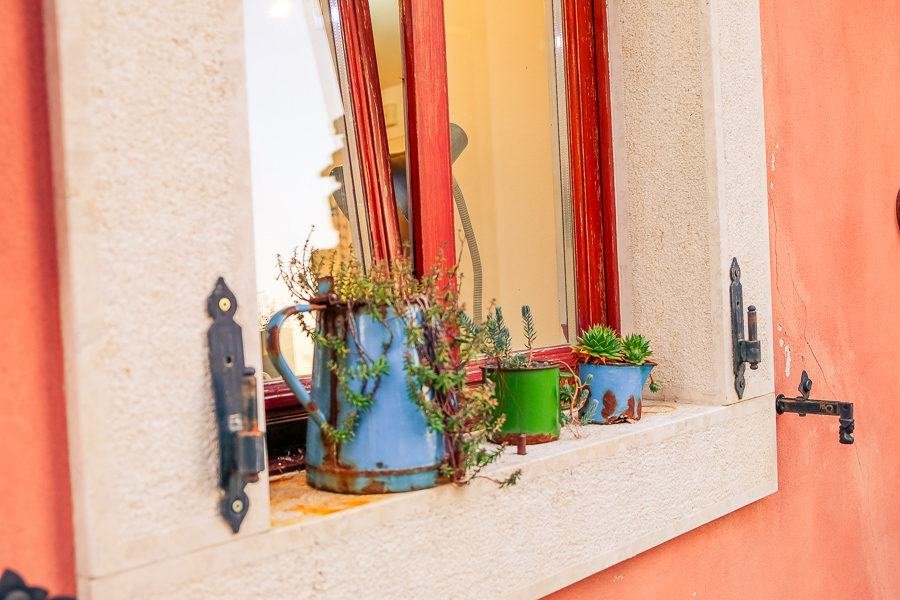
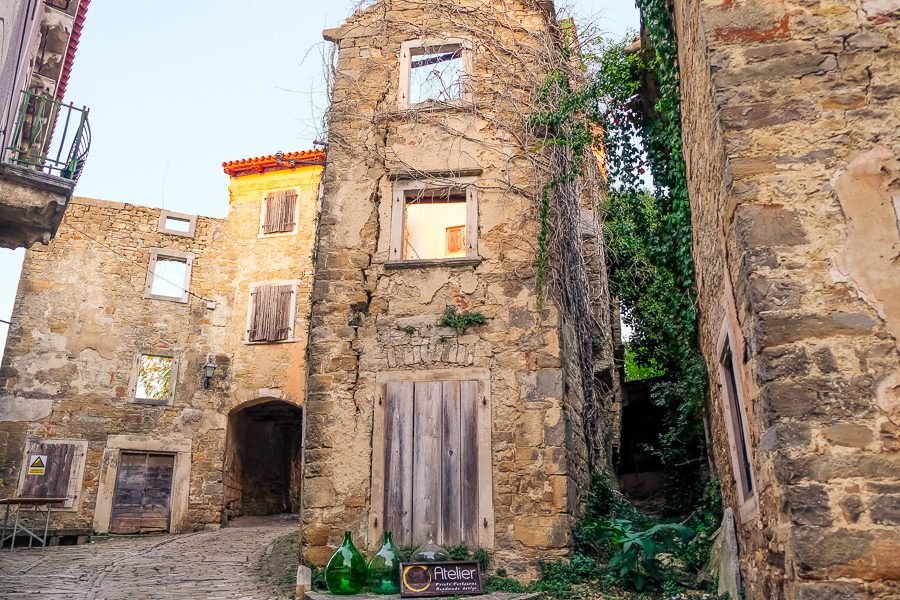
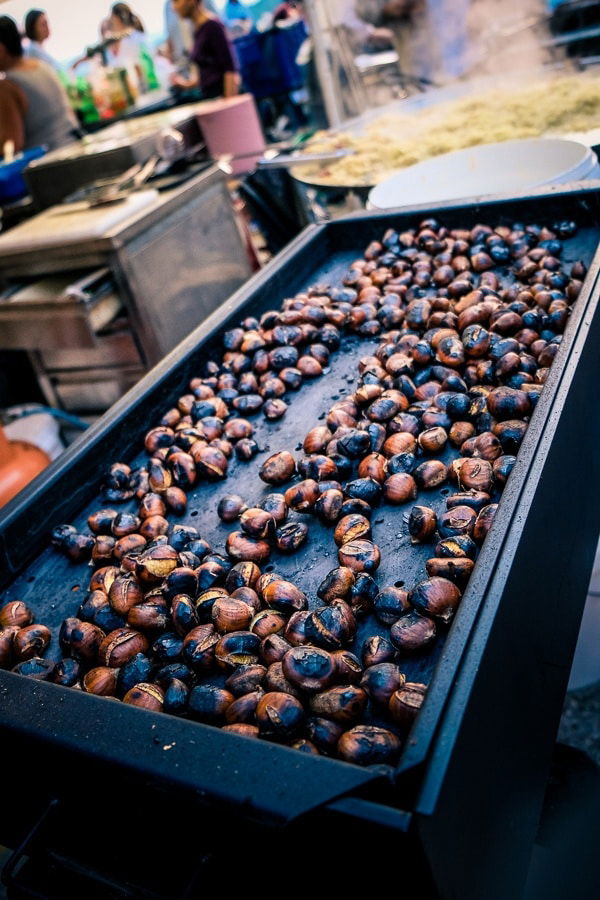
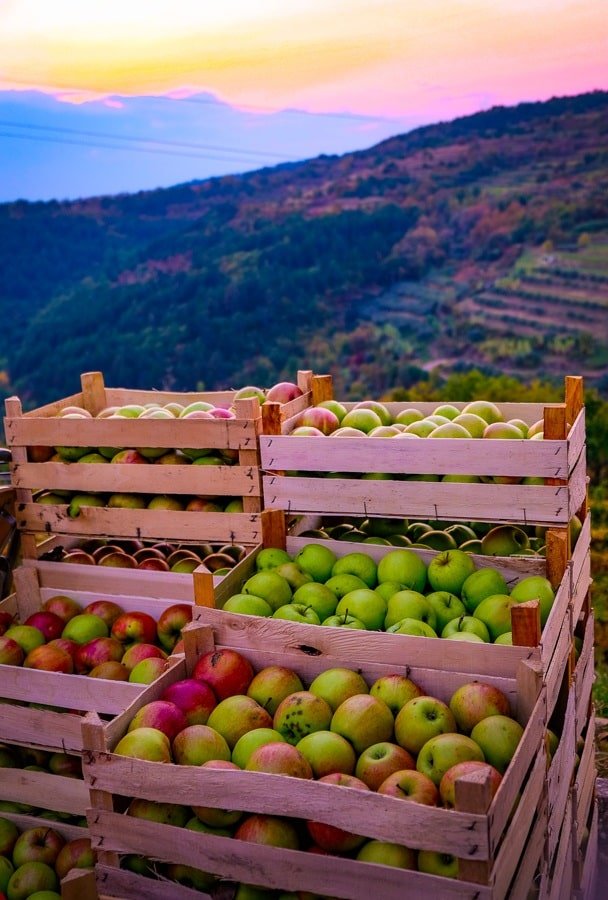
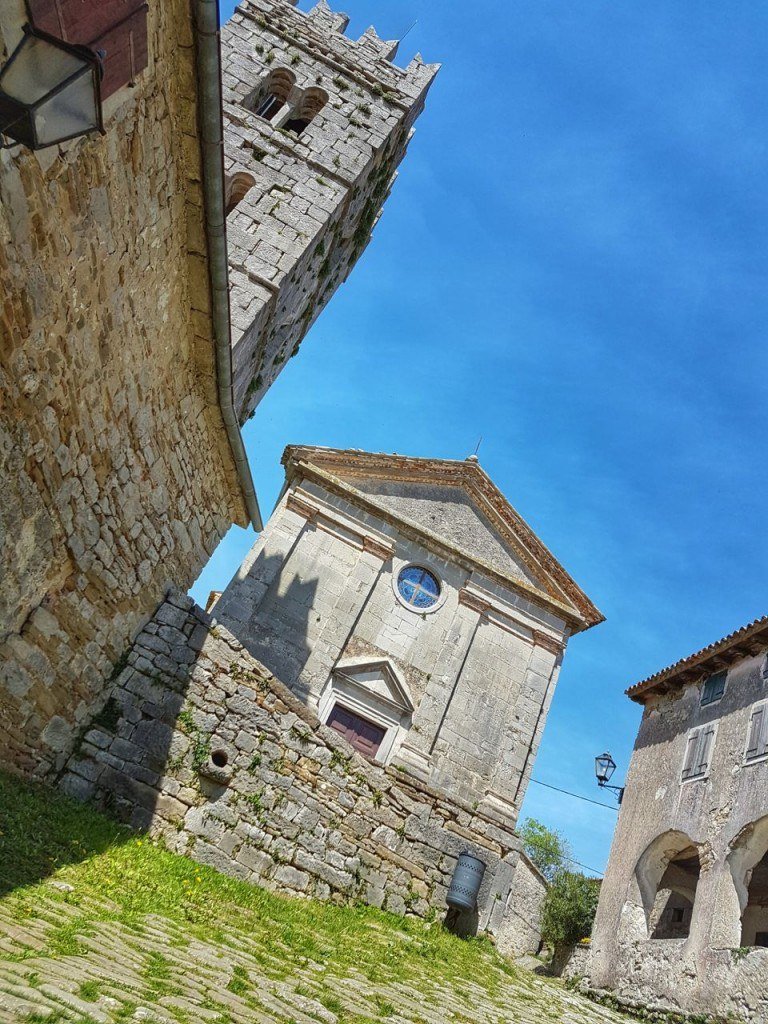
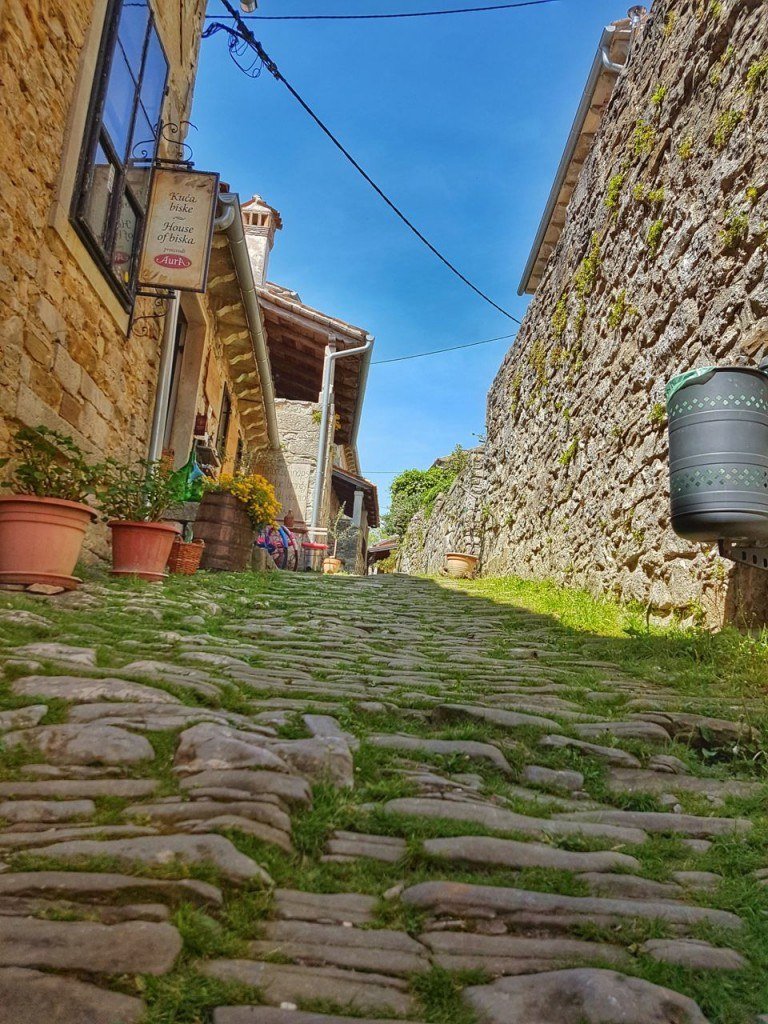
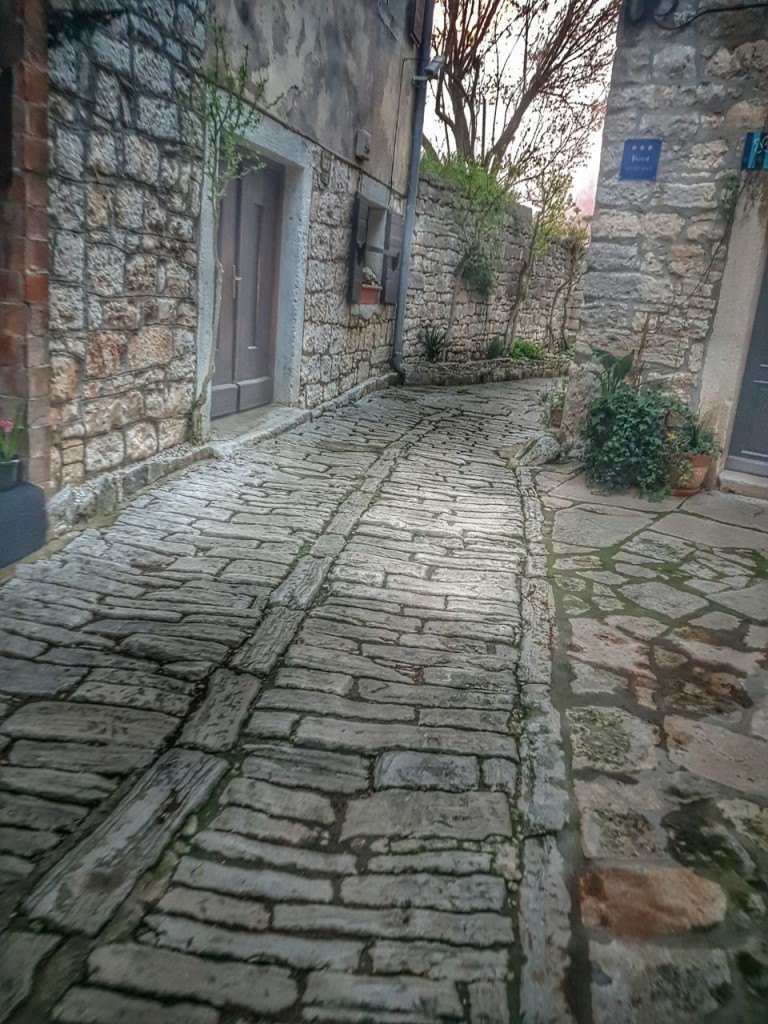
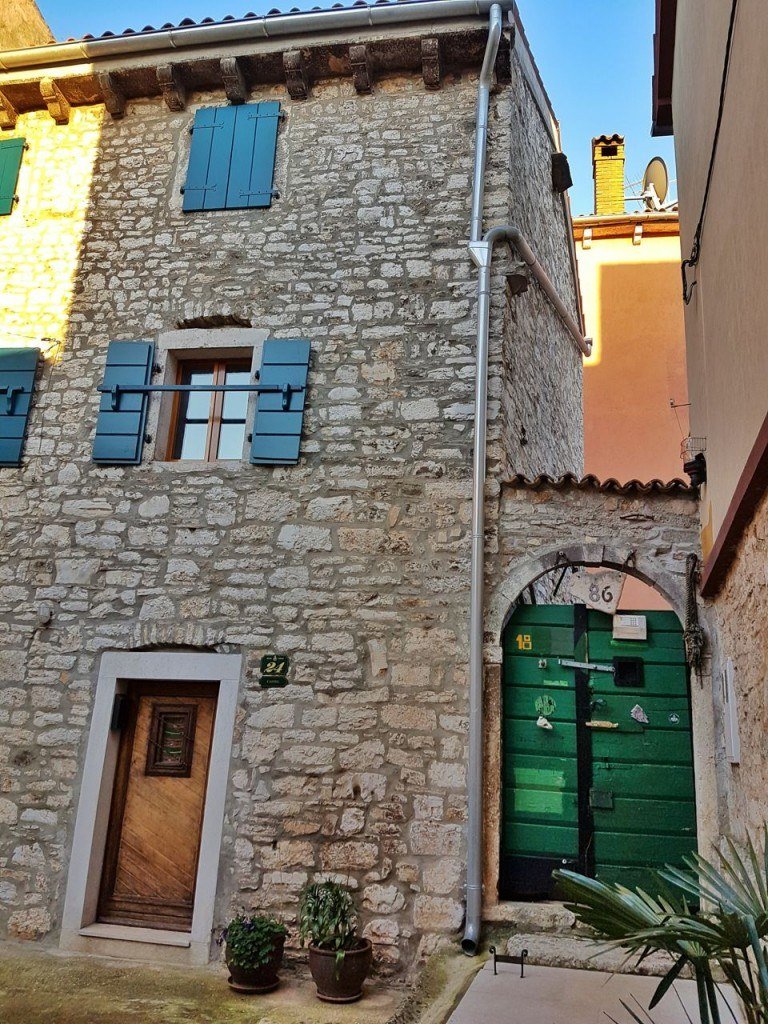
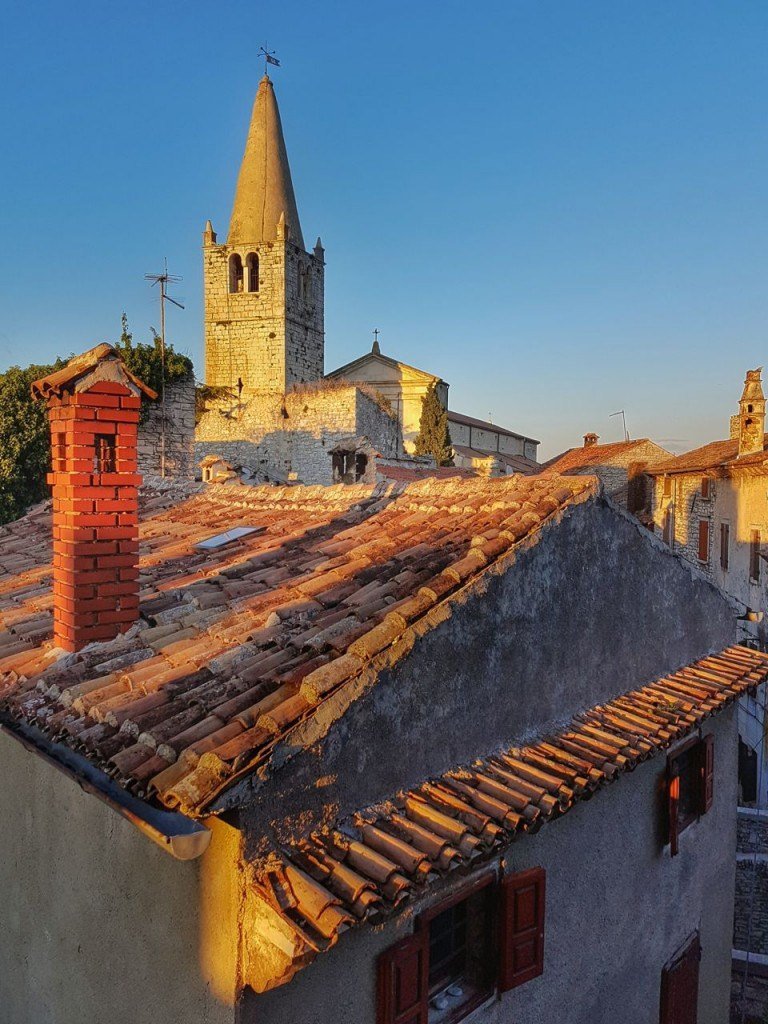
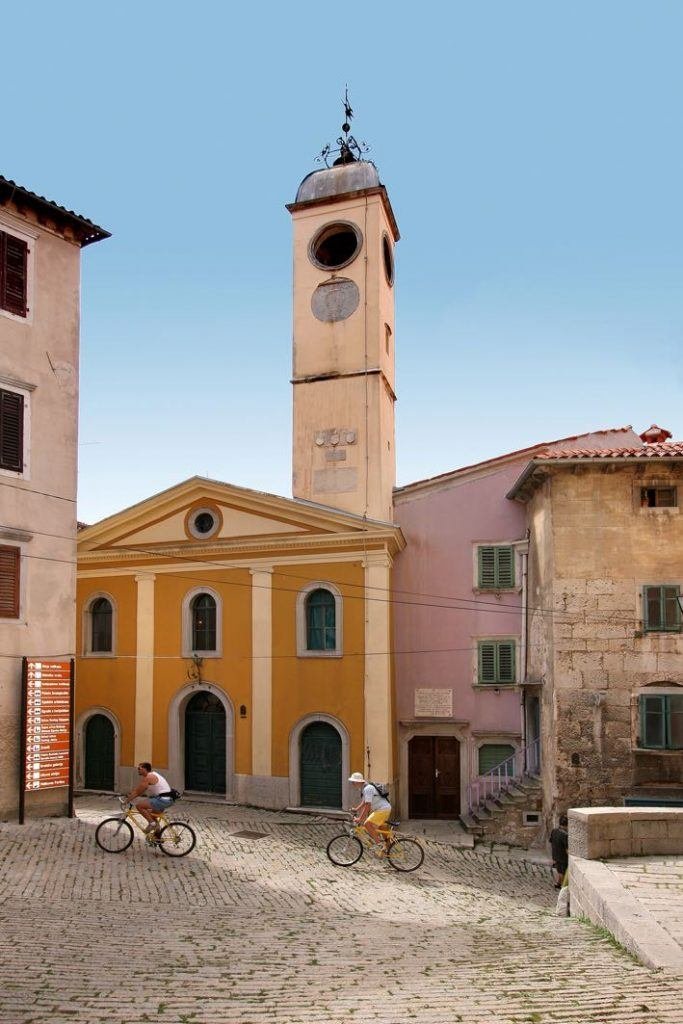
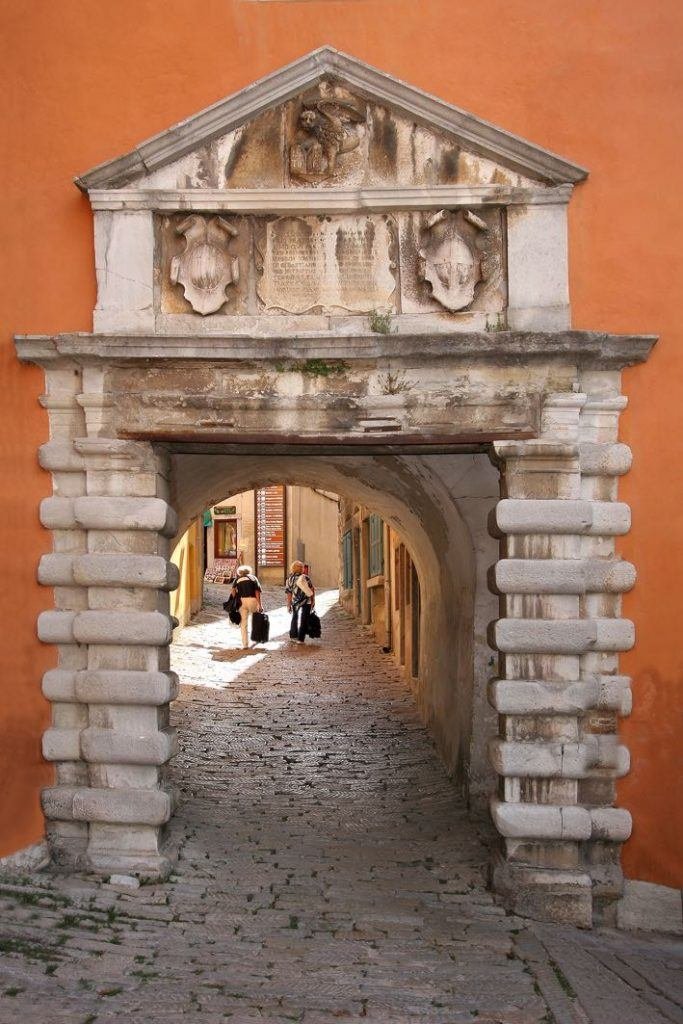
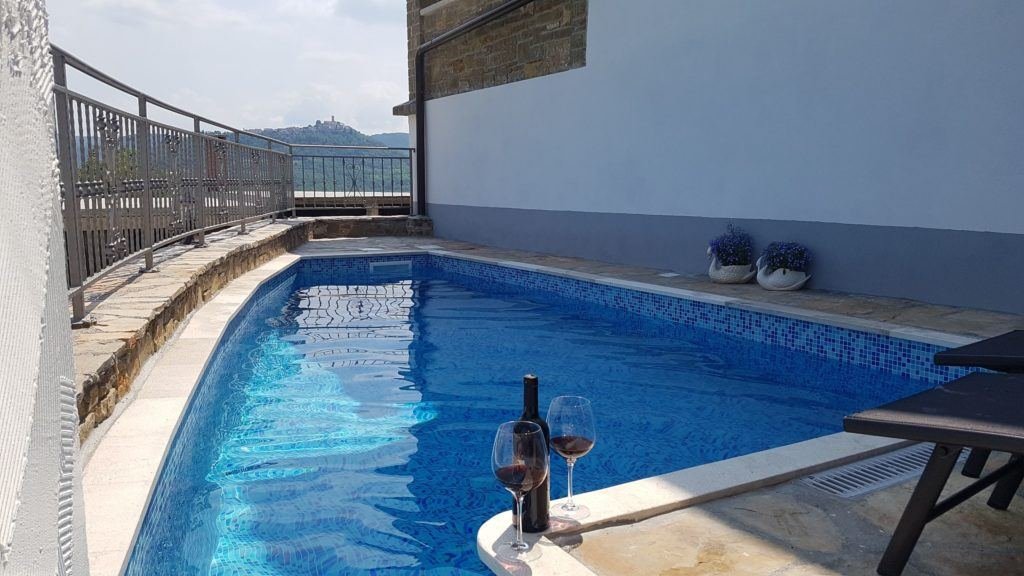
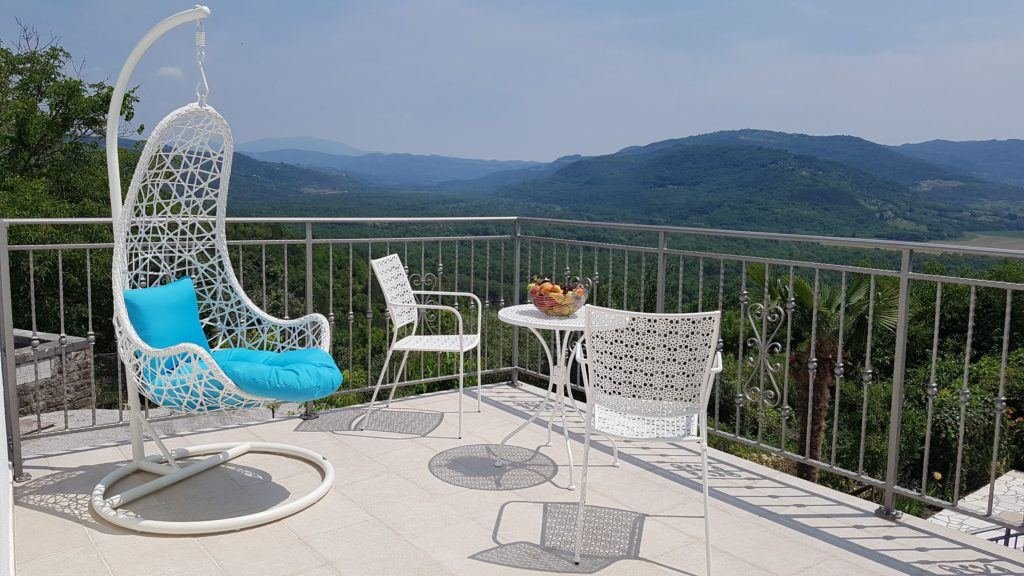
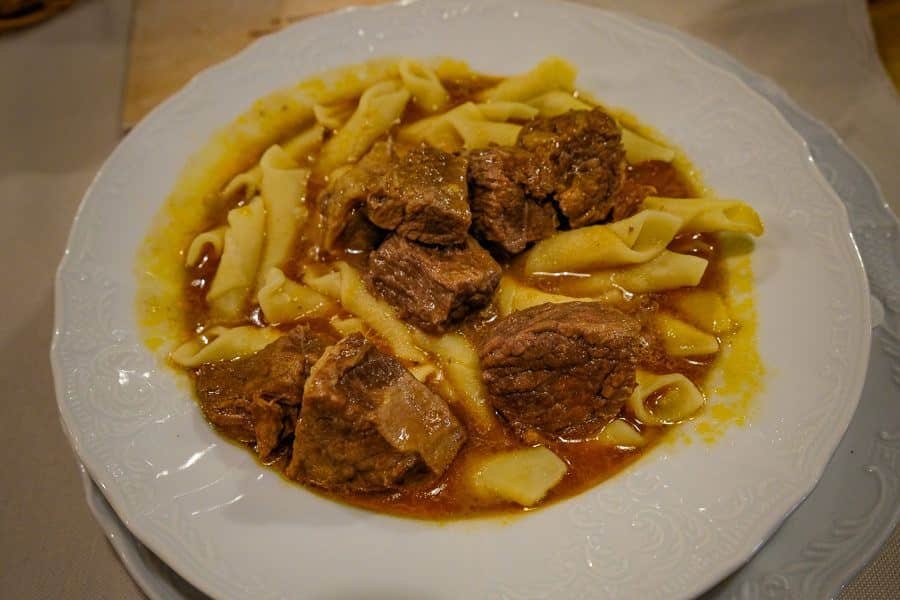
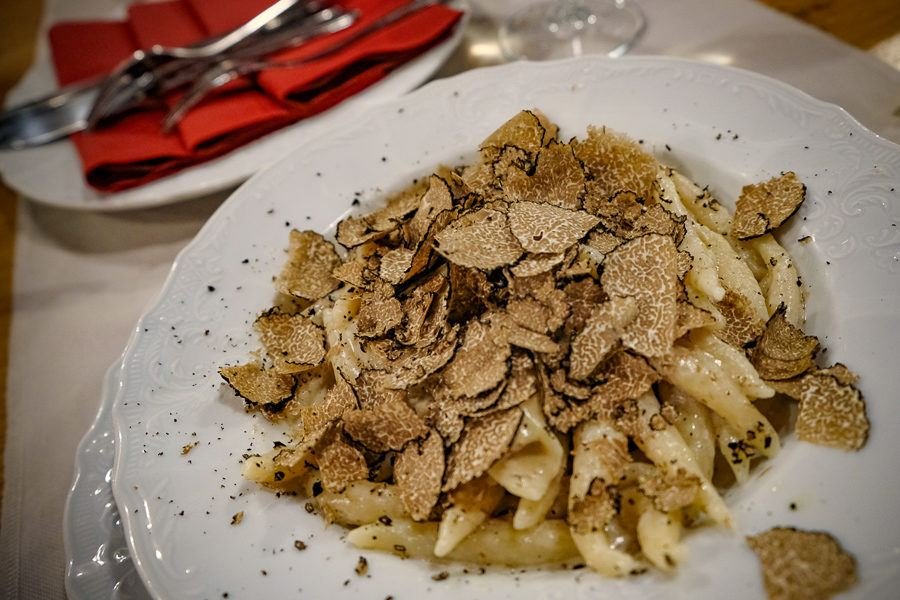


Hidden jem…Grozjian!!
Hmm, I have been 2x, it’s okay… but don’t hate me, I don’t love it there.
Is there a good way to go from Zagreb to Buje in Istria? And where to stay in Buje? I understand it’s quite a small town. I’d like to visit this summer, it’s where my great-grandparents were from
It’s about 3 hours by car you can get a transfer with our company on the link below or by bus :D. That is so cool you are going back to your roots –<3 that.
http://s27412.p99.sites.pressdns.com/croatia-transfers-croatia-airport-transfers/
(My) Jane and I will stay in Icici, Opatija 23/8-30/8 this year, and will drive around Istria as much as we can. Following week we will spend in Povljana, Pag – before we fly home again to Denmark. Will be a great vacation as usual …
yes, yes, sure sounds like it! You two should move here. Wink.
We (two retired teachers from Canada) are headed to Croatia in May and June, 2017. We will be staying in the Rijeka area for part of the time and exploring Istria before driving down the Dalmatian coast. We had planned trips to Groznjan, Rovinj, Pula and now you have added some new places to explore. Thank you!
Yay! You are so so very welcome. Enjoy. I have another post next week on Istria with even more ideas :D
SJ
Very proud Donkey ✅
I’ve been following you guys for some time now, but am only just actually finally getting around to planning a trip to Croatia this year. Thanks for all the tips!
You are so welcome!